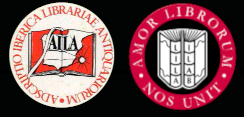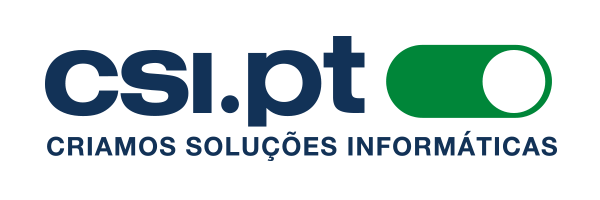


Home |
Temáticas |
Catálogos |
Pedidos |
  |  |
|||||||
|

|
RUGENDAS. (Johann Moritz) HABITANTE DE GOYAS, QUADRO A ÓLEO PINTADO SOBRE MADEIRA. |
|
|
Clique nas imagens para aumentar. MANUSCRITO - SÉCULO XVIII - CARTA DE PRIVILEGIO Y CONFIRMACION A FAVOR DO CONDE DE VILLALONGA E DOS CONDES DE VILLAFRANQUEZA [17 DE JANEIRO DE 1755]De 31x21 cm. Com 17 fólios. Encadernação da época de pergaminho flexível, com títulos escritos à pena na pasta anterior e com vestígios mais ou menos completos de três dos quatro atilhos originais em pergaminho. Manuscrito com encarquilhamento da pasta anterior, com uma mancha com vestígios de terra incrustados e uma deformação para cima e para dentro do seu canto superior direito devido a uma pancada nesse canto. Com manchas ao longo de todos os fólios. A pasta da frente da encadernação apresenta o seguinte título: Privilegio de Exempcion de Huespede de Aposento de la Casa de la Calle de S. Damaso [...] Nº 3º. Manuscrito com 23 linhas por página em letra castanha fácilmente legível, selado com três carimbos oleográficos de D. Fernando VI, Rei de Espanha, à cabeça da frente da primeira folha, no verso da décima segunda folha e na frente da décima terceira folha e com a décima folha, a décima primeira e a frente da décima segunda em branco, assim como o verso da décima sétima em branco. É uma carta de privilégio de aposentadoria solicitada por D. José Siverio y Cardona, 3º Conde de VillaFranqueza, para provar e confirmar que era o legítimo possuidor de alguns dos bens e privilégios que tinham sido concedidos ao seu antepassado Conde de Villalonga. O privilégio de aposentadoria confirmado por esta carta tinha sido concedido ao Conde de Villalonga, quando este era valido de Filipe II e estava no auge do seu poder, em 1605. Depois de ter caído em desgraça perante o Rei e ter perdido o direito ao referido título, os seus descendentes de ramos colaterais, que receberam o título de Condes de VillaFranqueza, após muitas vicissitudes vieram a solicitar o reconhecimento dos referidos privilégios em 1754. Documento de grande valor para o estudo da sociedade senhorial da Península Ibérica dos séculos XVII e XVIII. Nele se espelham a continuidade das linhagens nobres, que se sobrepõem às alterações políticas da luta pelo poder e mesmo às alterações das dinastias reinantes. Relações com Portugal. Os membros desta linhagem de origem catalã tiveram diversas relações com Portugal. O conde de Villalonga foi membro da Junta da Fazenda de Portugal e possuía casas em Lisboa. O seu descendente detentor do título de Conde de VillaFranqueza, seguiu o mesmo partido que Portugal durante a Guerra da Sucessão Espanhola (1700-1714). Apesar da prisão e julgamento de seu pai, Filipe III reconheceu o filho mais velho do Conde de Villalonga, Martin Franqueza, como legítimo herdeiro do morgado de Franqueza e concedeu-lhe o respectivo título de Conde, em 1614. O Conde de VillaFranqueza vem a falecer sem filhos passando o seu título e direitos para o seu sobrinho D. Pedro José Siverio Franqueza, 2º Conde de VillaFranqueza, que foram reconhecidos em 18 de Agosto de 1658. D. Pedro faleceu prematuramente em 1670 sendo suceddido nos seus títulos e direitos por seu filho menor D. José Siverio y Cardona, 3º Conde de VillaFranqueza. Durante a guerra de Sucessão de Espanha, que opôs os partidários dos descendentes franceses e austríacos, do rei Carlos II, D. José seguiu o partido do candidato austríaco, que veio a ser derrotado. Por esse motivo viu-se obrigado a refugiar-se na Corte de Viena de Austria, onde recebeu todos os apoios destinados pelo Imperador aos defensores da sua causa. Depois da celebração da paz de Viena, em 30 de Abril de 1725, ele e os seus descendentes puderam voltar a solicitar a devolução dos bens e títulos que lhe tinham sido confiscados. O presente documento foi então apresentado para lhes serem novamente outorgados e reconhecidos os direitos de Isenção de Aposentadoria para as casas de Madrid, que tinham sido concedidos ao seu antepassado Conde de Villalonga, que tinham sido reconhecidos ao respectivo filho, 1º Conde de Villafranqueza, e que estavam incluídas nos bens e privilégios anexos ao morgadio dos Conde de Villa Franqueza, ratificados por Filipe III, em 1614. BIOGRAFIAS: 1 - Pedro Franqueza y Esteve, Conde de Villalonga (Igualada, Barcelona, 1547 - Torres de León 1614). Depois de ser, desde os oito anos, aprendiz no cartório de Jerónimo Gasol, ingressou, em 1571, num dos ofícios do Conselho Supremo de Aragão o de escrivão de registo. Em 1574 subuiu a escrivão dos despachos judiciais. Posteriormente teve um lugar relevante na elaboração e guarda dos originais das Constituições aprovadas nas Cortes de Monzon dos Reinos de Aragão em 1585. De 1589 a 1599 desempenhou as funções de secretáro de Valência, onde começaram as suas estreitas relações com Francisco Gómez de Sandoval, Marquês de Denia e Vice-Rei de Valência. Nessas funções controlava todos os assuntos relativos ao Estado, à Guerra, Justiça e Administração, assim como a provisão de ofícios eclesiásticos. Em 1599 teve grande protagonismo nas cerimónias do casamento de Felipe III, o que juntamente com o apoio do Duque de Lerma o levou a ganhar muuito poder rápidamente. Foi, sucessivamente, Secretário do Conselho da Inquisição, Secretário da Rainha Margarida, Conde Villlalonga em 1603, desempenhou funções na Junta da Fábrica de Armas, na Junta da Fazenda de Portugal, na Junta dos Três e na Junta do Desempenho Geral e em 1606 foi nomeado regedor perpétuo de Madrid. Utilizou estas funções em seu próprio benefício e juntou uma grande fortuna e diversas casas, pois além da sua casa da Paróquia de São Ginés, Rua da Ropería, adquiriu outras radicadas en Toledo, Sevilha, Segóvia, Granada, Córdoba, Ávila, Guadalajara, Alcalá de Henares y Lisboa. Comprou os seguintes senhorios: Corpa, por 10.200 ducados; Tielmes y Romancos por 16.000; Merchán, por 72.000; Villalonga por 71.000, Benimeli, por 13.000; Navajas, 21.000; Villafranqueza, Villamarchante y Berlinches adquiridos por 53.000 ducados. Em 2 de Janeiro de 1607 foi detido e teve início um inquérito, para inspecionar os seus actos. Foram provados mais de 484 acusações, entre elas: falsificação de documentos, desvios de dinheiros públicos, fraudes, ocultação de bens, corrupção passiva, extorsões, e tráfico de influências. Ficou preso até falecer, foi obrigado a devolver mais de um milhão e meio de ducados e perdeu todas as funções, assim como o senhorio e título condal de Villalonga. 2 - D. Martin Valerio Franqueza y Gabriel, Conde de VillaFranqueza ( - 1658) filho primogénito do anterior. O seu pai instituiu um Morgadio a seu favor e todos os seus herdeiros, ratificado em 14 de Dezembro de 1603. Apesar de ter sido condenado por abuso de poder e corrupção o que colocava os bens vinculados em causa, o Rei Filipe III, para obviar a esse problema, concedeu a D. Martin o senhorio e título de Conde de VillaFranqueza, por decreto de 13 de Janeiro de 1614, em troca de uma declaração de renúncia aos bens de seu pai que tinham sido confiscados e de aceitação do teor das sentenças pronunciadas contra ele. 3 - D. Pedro José Siverio Franqueza, 2º Conde de VillaFranqueza ( - 1670) sobrinho do anterior herdou o morgadio definitivamente, em 18 de Agosto de 1658, exerceu funções de caracter militar em Madrid e em Valência falecendo prematuramente. 4 - D. José Siverio y Cardona, 3º Conde de VillaFranqueza (1668? - 1758) filho primogénito do anterior desempenhou diversas funções nos órgãos de governo de Valência, tal como administrador das sisas. Durante a guerra da Sucessão de Espanha tomou o partido do pretendente ao trono que foi derrotado, sofrendo a confiscação dos seus bens e vendo-se obrigado a refugiar-se em Viena de Austria em 1714. 5 - Juan António de Espina, do Conselho Real, secretário do mesmo e Contador General del Juzgado de la Regalía de Aposento, desde 25 de Outubro de 1749, com 20 mil reais de soldo, função que exercia na data em que elaborou este documento, veio a ser secretário do Juzgado y Visita General del Real Aposento de Corte, desde 1761. 6 - Fernando VI. (Madrid 1713 - Vilaviciosa de Odón 1759) Rei de Espanha desde 9 de Julho de 1746, tinha-se casado, em 1729, com a infanta D. Bárbara de Bragança, filha de D. João V e irmã do futuro rei D. José I. A sua irmã D. Mariana Vitória casou-se com o seu cunhado D. José I, Rei de Portugal, num acordo entre Portugal e Espanha que ficou conhecido pela: Troca das Princesas. D. Fernando VI foi um rei pacífico e um apaixonado de música, paixão que partilhou com a sua mulher, que foi discípula de Domenico Scarlati.
The front cover bears the following title: Privilegio de Exempcion de Huespede de Aposento de la Casa de la Calle de S. Damaso [...] Nº 3º. Manuscript with 23 lines per page in easily legible brown lettering, sealed with three oleographic stamps of Fernando VI, King of Spain, at the head of the front of the first leaf, on the verso of the twelfth leaf and on the front of the thirteenth leaf, and with the tenth leaf, the eleventh leaf and the front of the twelfth leaf blank, as well as the verso of the seventeenth leaf. It is a letter of privilege of retirement requested by D. José Siverio y Cardona, 3rd Count of VillaFranqueza, to prove and confirm that he was the rightful possessor of some of the property and privileges that had been granted to his ancestor Count of Villalonga. The privilege of retirement confirmed by this letter had been granted to the Count of Villalonga, when he was favoured by Philip II and at the height of his power, in 1605. After he fell into disgrace before the King and lost the right to the said title, his descendants of collateral branches, who received the title of Counts of VillaFranqueza, after many vicissitudes came to request recognition of the said privileges in 1754. A document of great value for the study of the manorial society of the Iberian Peninsula in the 17th and 18th centuries. It relates the continuity of noble lineages, which overlapped the political changes of the power struggle and even the changes of the reigning dynasties. Relationships with Portugal. The members of this lineage of Catalan origin had various relations with Portugal. The Count of Villalonga was a member of the Junta da Fazenda de Portugal and owned houses in Lisbon. His descendant holding the title Count of VillaFranqueza, followed the same party as Portugal during the War of the Spanish Succession (1700-1714). Despite his father's imprisonment and trial, Filipe III recognized the eldest son of the Count of Villalonga, Martin Franqueza, as the legitimate heir to the Morgado de Franqueza and granted him the respective title of Count in 1614. The Count of VillaFranqueza died childless passing his title and rights to his nephew D. Pedro José Siverio Franqueza, 2nd Count of VillaFranqueza, which were recognised on 18 August 1658. D. Pedro died prematurely in 1670 and was succeeded in his titles and rights by his younger son José Siverio y Cardona, 3rd Count of VillaFranqueza. During the Spanish War of Succession, which opposed the supporters of the French and Austrian descendants of King Carlos II, José sided with the Austrian candidate, who was defeated. For this reason he was forced to take refuge at the Court of Vienna in Austria, where he received all the support the Emperor intended for the defenders of his cause. After the peace of Vienna was concluded on 30 April 1725, he and his descendants were again able to apply for the return of the property and titles that had been confiscated from him. The present document was then presented in order to be granted and recognised again the rights of Exemption of Retirement to the houses of Madrid, which had been granted to their ancestor Count of Villalonga, which had been recognised to his son, 1st Count of Villafranqueza, and which were included in the property and privileges attached to the of the Counts of Villa Franqueza, ratified by Filipe III in 1614. BIOGRAPHIES: 1 - Pedro Franqueza y Esteve, Count of Villalonga (Igualada, Barcelona, 1547 - Torres de León 1614). After apprenticing at the age of eight in the office of Jerónimo Gasol, he entered, in 1571, in one of the positions of the Supreme Council of Aragon, that of registrar. In 1574 he was made clerk of court orders. Later he had an important role in the preparation and keeping of the originals of the Constitutions approved by the Cortes de Monzon of the Kingdoms of Aragon in 1585. From 1589 to 1599 he served as secretary of Valencia, where his close relations with Francisco Gómez de Sandoval, Marquis of Denia and Viceroy of Valencia began. In these functions he controlled all matters relating to the State, War, Justice and Administration, as well as the provision of ecclesiastical offices. In 1599 he played a leading role in the wedding ceremonies of Filipe III, which, together with the support of the Duke of Lerma, allowed him to quickly gain a great deal of power. He was successively Secretary of the Inquisition Council, Secretary to Queen Margarida, Count Villlalonga in 1603, served on the Board of the Weapons Factory, the Board of the Portuguese Treasury, the Board of the Three and the Board of the General Performance and in 1606 was appointed perpetual regent of Madrid. He used these functions for his own benefit and amassed a great fortune and several houses, for besides his house in the Parish of San Ginés, Rúa de la Ropería, he acquired others based in Toledo, Seville, Segovia, Granada, Córdoba, Avila, Guadalajara, Alcalá de Henares and Lisbon. He bought the following landed estates: Corpa, for 10,200 ducados; Tielmes y Romancos for 16,000; Merchán, for 72,000; Villalonga for 71,000, Benimeli, for 13,000; Navajas, 21,000; Villafranqueza, Villamarchante y Berlinches acquired for 53,000 ducados. On 2 January 1607 he was arrested and an enquiry began, to inspect his actions. More than 484 charges were proved, including: forgery of documents, embezzlement of public money, fraud, concealment of assets, passive corruption, extortion, and influence peddling. He was imprisoned until he died, was forced to return more than one and a half million ducados and lost all his functions, as well as the landlord and county title of Villalonga. 2 - D. Martin Valerio Franqueza y Gabriel, Count of VillaFranqueza ( - 1658) first-born son of the previous. His father instituted a majorat in his favour and all his heirs, ratified on 14 December 1603. Although he was convicted for abuse of power and corruption which put the bound property in question, King Filipe III, to obviate this problem, granted D. Martin the lordship and title of Count of VillaFranqueza, by decree of 13 January 1614, in exchange for a declaration of renunciation of his father's property which had been confiscated and acceptance of the content of the sentences pronounced against him. 3 - D. Pedro José Siverio Franqueza, 2nd Count of VillaFranqueza ( - 1670) nephew of the previous one inherited the majorat definitively, on 18 August 1658, exercised functions of military character in Madrid and Valencia dying prematurely. 4 - José Siverio y Cardona, 3rd Count of VillaFranqueza (1668? - 1758), eldest son of the previous Count, performed various functions in the governing entities of Valencia, such as treasury administrator. During the war of the Spanish Succession he sided with the defeated pretender to the throne, suffering the confiscation of his property and being forced to take refuge in Vienna in 1714. 5 - Juan Antonio de Espina, of the Royal Council, secretary of the same and Accountant General del Juzgado de la Regalía de Aposento, since 25 October 1749, with 20 thousand reais of soldo, a position he held on the date he drew up this document, came to be secretary of the Juzgado y Visita General del Real Aposento de Corte, since 1761. 6 - Fernando VI. (Madrid 1713 - Vilaviciosa de Odón 1759) King of Spain since 9 July 1746, he had married, in 1729, the Infanta D. Bárbara de Braganza, daughter of King João V and sister of the future King José I. His sister Mariana Victoria married her brother-in-law José I, King of Portugal, in an agreement between Portugal and Spain which was known as the: Exchange of the Princesses. D. Fernando VI was a peaceful king and a music lover, a passion he shared with his wife, who was a disciple of Domenico Scarlati. Referências/References: Ricardo Gómez Rivero - El Juizo al Secretario de Estado, Conde de Villalonga. Ivs Fvgit, 10-11, 2001-2002, pp. 401-531. Francisco José Marín Perellón - Planimetría General de Madrid y Visita General de Casas, 1750-1751. Catastro, Julio 2000. Referência: 2208PG008
Local: Gravureiro Gav. 3-02 Caixa de sugestões A sua opinião é importante para nós. Se encontrou um preço incorrecto, um erro ou um problema técnico nesta página, por favor avise-nos. 
|
Pesquisa Simples




|
||
 |
|||
|